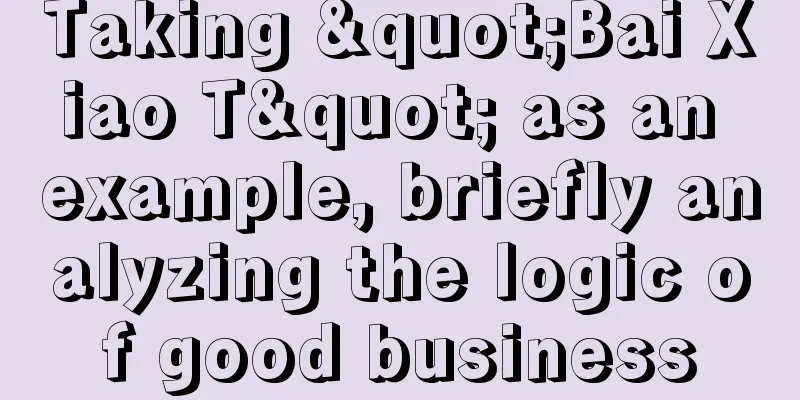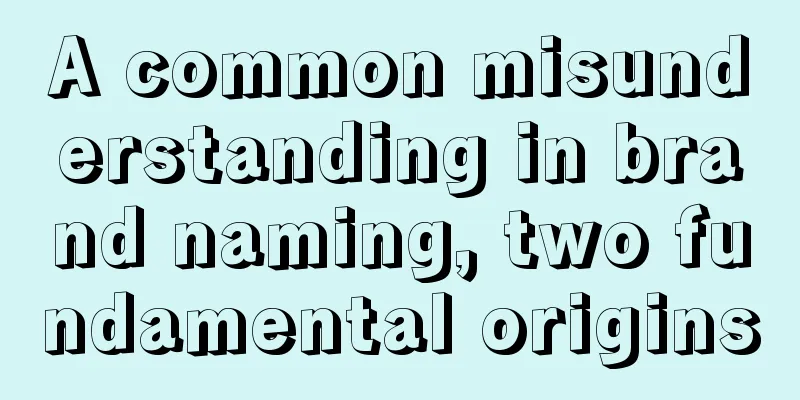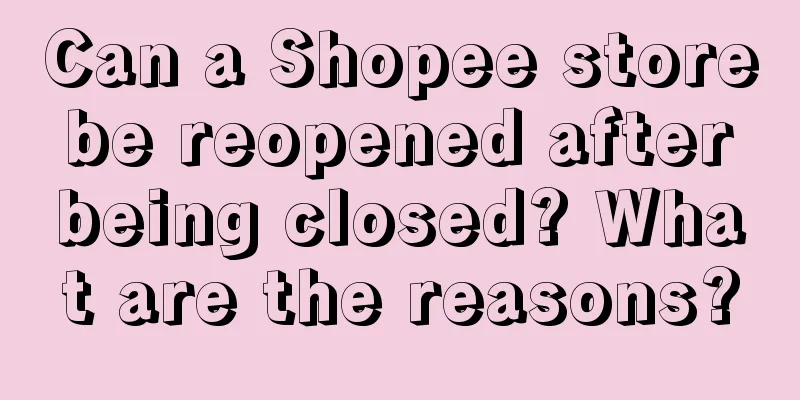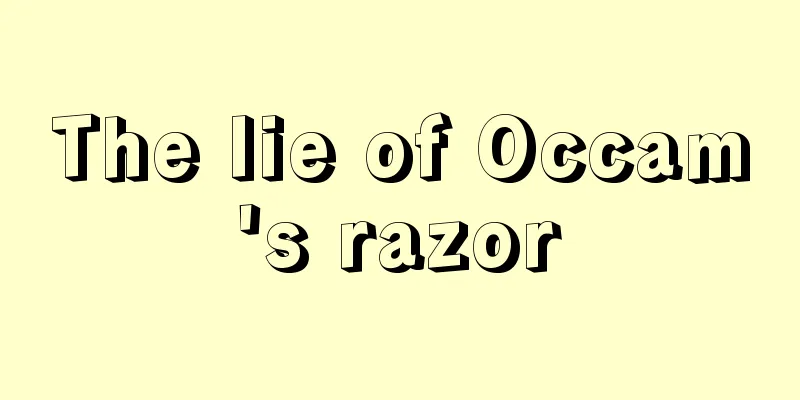Taking "Bai Xiao T" as an example, briefly analyzing the logic of good business

1. What is business? Occupy a place of your ownWhat is not in your cognition is more important than what is on the shelf. Because only when our cognition is empty, we have the opportunity to seize a position, business = position. The so-called business opportunities exist objectively in the subjective cognition of consumers. You need to look at the market from the outside, define the business from the outside, shape the product value from the outside, and even spread information from the outside. The process of insight, discovery, and occupying a position is the process of doing business. When consumers have category awareness but no brand awareness, the biggest vacancy is to occupy the category vacancy and let the brand represent the category (brand = category). If you give up the opportunity to enter the endorsement category first during this period and go toe-to-toe with the so-called competitors, you will essentially make a big mistake - you win the battlefield but lose the battle, and miss the battle momentum. Therefore, don’t just target your competitors, but also keep a close eye on your customers and seize the window of opportunity to establish a cognitive advantage. The quality of a decision depends on whether it is timely and whether it lasts for a long time. Because only time is irreversible. As the saying goes: once you lose an opportunity, it will never come back, this is what it means (occupying the window of opportunity for a vacancy). To this end, Drucker said: "In the planning process, the timing decision itself is a risk-taking decision. It largely determines the allocation of resources and efforts and the risks taken. Postponing a decision itself is risky and often irreversible." The time window (occupying the empty spot) is the same for everyone, and the opponent must want to win just like us. 2. What is a good business? Brand = CategoryIf you just want to sell goods, channels + traffic are enough. While selling goods, you also build a brand. This kind of business is both interesting and sexy - you have to build a brand in the blue ocean and compete for supply chain in the red ocean. There is never one more or one less T-shirt in the world; there is never one more or one less T-shirt on the shelf. In fact, from a marketing perspective: everything you see on the shelf is a red ocean, and the real blue ocean lies in the consumer's cognition. 1. Category is the foundationThinking from the perspective of categories is the first step in doing business. Categories are the matrix, the market, and the foundation of business. Only a rich matrix of categories can breed strong brand vitality. Therefore, the category behind the product is the driving force of business. It is said that it is good to lean against a big tree for shade, and it is said that a pig standing in the wind can fly. Big trees and hot spots are actually new product categories and new opportunities. 2. Operational decisions are more important than management decisionsYou can’t rely solely on management efficiency to solve business problems. As an entrepreneur, the first decision-making efficiency is to: see and discover opportunities to create new categories of business. That is: there is basic knowledge of the category in the market, but it has not yet been occupied by a strong brand in the minds of consumers. 3. Opportunity is to proactively differentiate and take the leadDifferentiation brings opportunities - opportunities to create new categories. A step ahead is a martyr, a half step ahead is a role model. So how do you judge whether you have taken a step or a half step? In fact, it is a reflection on differentiation and new categories. Category differentiation brings new market space, and differentiation is the driving force of business development. Waging a war in a highly competitive cognitive environment is clearly unwise and requires more resources. New media produces new content, new content brings in new crowds, and new crowds trigger new brand opportunities. Therefore, having categories but no brands is the foundation of a good business, and a clean "brain" is a necessary condition. When it comes to down jackets, there are big goose and Bosideng; when it comes to men's trousers, there is Jomoo; when it comes to jackets, there is KingBoss. But when it comes to T-shirts, what brand can directly reach the minds of consumers? It seems, really not!!! This is a great business opportunity. In the 200 billion T-shirt category market, there has been a lack of an expert brand. This is indeed good business. Discovering and selecting category opportunities is an entrepreneur’s primary business decision. In fact, it is not just the 200 billion worth of T-shirts that don’t have a specialist brand, the 300 billion worth of shirts don’t have a flagship brand—a comfortable shirt brand—which is also a good opportunity (there are categories but no brands).
3. How to seize good business1. Eliminate the sharp products and saturate the attackWhat does a brand rely on to capture people’s minds? Ultimately, it relies on quality products. All the feelings, ideas, and values of an entrepreneur should be reflected in the product. Your product is your feelings, your product is your idea, and your product is your value. Those who talk about feelings, ideas, and values without considering the product can only impress a small number of people, but cannot inspire the masses. Consumers vote with their feet. Talking without practicing is just a fake trick, and practicing without talking is just a fake trick. Only those who can both talk and practice are good tricks. 2. Product strength is to find and focus on selling pointsThe essence of differentiated competition is to form differentiated cognition on the consumer side, guide facts through cognition, and strengthen cognition with the help of facts. On the one hand, there is the factual differentiation support at the product level, and on the other hand, there is the differentiated cognitive segmentation of consumers. The method is to focus on categories, create super products, and create super hits, thereby forming a strong perception in the minds of potential customers. Otherwise, the more products there are, the less focused the perception will be, and the less money you will make. As mentioned in "Selected Works of Mao Zedong": Concentrating military forces is the first and foremost thing. The reason why concentrating military forces is necessary is to change the situation between the enemy and us. To win victory in strategic defense, it is basically based on concentrating military forces - for enterprises, the phrase "concentrating military forces" means eliminating cutting-edge products. 3. How to eliminate cutting-edge products: dig out pain points and let consumers see the detailsBrand is the spirit of product, and product is the form of brand. At the beginning of brand, consumers understand the values expounded and conveyed by the brand through the product. No matter how good the corporate philosophy and brand values are, if there is no top-notch product to present them, they can only be castles in the air. When you are not a brand yet, consumers judge the brand by its products. When you become a brand, consumers judge your products by your brand. Therefore, productism is the foundation of branding, and products are also the ticket to branding. I have never seen a company with a good product but not a brand. On the contrary, I have seen many companies that wanted to build a brand but died on the product. Especially in the early market, almost all purchasing decisions are made by technology enthusiasts and visionaries, and the most important value areas are technology and products - "Crossing the Chasm". When a new brand is launched, it should first break through with a single point under limited funds. There is no need to have a lot of selling points and features. Focus on breaking through with product strength and find a differentiation point (single point) in product strength (function-benefit). From craftsmanship, ingredients, components to functions, the product should be reduced to the point where it can satisfy consumers' interests. The profit comes from one point, which is the product's satisfaction of needs. "A great marketing master is a natural translator of human weaknesses." At 2:30 in the morning, I wrote this sentence on my desk. I like it very much. I think it is not just marketing, but also product development and even business models. You must understand human nature from the bottom up and become a translator of needs. - Bai Xiao T, Zhang Yong said. For example, the fabric of the white T-shirt is made of long-staple cotton, which is then treated with liquid ammonia at -180 degrees Celsius, making it very delicate and smooth to the touch (physical sensation). To address the problem of unraveling at the neckline and deformation after a few washes, the loose white T-shirt has two spandex threads added to the neckline. At the same time, the neckline and sleeve hem use the Japanese three-needle process, which makes the clothes more durable, less likely to unravel, and the neckline is not easily deformed (experience). In addition, there is not a single thread end on the entire T-shirt, truly achieving "0" thread ends (visual). In addition, unlike other T-shirts with relatively "light" packaging, Bai Xiao T uses "heavy" packaging - which goes a step further in terms of packaging vision, conveys a distinctive visual difference, and thus forms a very distinctive brand tone. So we say: a product is a combination of tangible and intangible things that meet consumer needs. It includes: core products, form products, and additional products. To understand products, we must return to the roots. The core lies in the understanding of the product's category, characteristics, and differentiation - the core lies in the discovery, understanding, and occupation of category characteristics. The key to grasping category differentiation and creating hot-selling products lies in product strength. Product strength is essentially the understanding of categories and characteristics, which ultimately manifests itself in the ultimate functions and benefits of products. The founder must first be an ultimate productist, and must express and convey the ultimate pursuit of products.
Form product: packaging, form, size. Core products: functions, benefits, and value. Additional products: ideas, stories, culture. Core products solve the problem of purchasing, form products solve the problem of aesthetics, and additional products solve the problem of love. 4. Pricing based on momentumWhatever position you occupy, you can naturally charge a corresponding price. On the contrary, if you are not in that position, you cannot set that price. It is not that you cannot set it, but that consumers do not accept or recognize it because you do not have that potential energy. Price is potential energy - a good warrior seeks it from potential, not from others, so he can blame others and take advantage of potential. In fact, compared with cost, consumers are more concerned about the benefits brought by purchasing products, which include: use value, functional value, image value and social value. The logic of pricing has never been cost, but to create advantage recognition and price anchoring. If we use Bai Xiao T's logic, it means: high technology (use value), high appearance (image value), high quality (functional value), and high social currency (social value). Our packaging is made of 75g birch wood and laser engraved. Technology must solve user pain points, and technology must have explicit product selling points, or in other words: it must add points to the product. High quality is also important, and high social currency attributes are the most important. If your product does not have high social currency attributes, it is very terrible - Bai Xiao T, Zhang Yong said. Buy the same product at one-tenth the price. Before Bai Xiao T, the T-shirt that attracted widespread attention was Vancl 10 years ago, which sold T-shirts for 29 yuan. For the same category (T-shirts), Bai Xiao T and Vancl chose different pricing. One sold cheap products at a lower price, while the other sold expensive products at a lower price. The former sold cultural T-shirts (29 yuan), while the latter sold technological T-shirts (99-299 yuan). The difference is that Vancl seized the PC era, while Bai Xiao T rebuilt Vancl's business based on mobile Internet + short videos. What kind of product you want to be, you have to stand beside it. When inviting people to dinner, Moutai is served as the white wine. What kind of red wine is suitable, which is not expensive but also face-saving? Penfolds 407 is tied to Moutai Feitian, and the price suddenly becomes reasonable. When there is no more information, the past price (or other comparable prices) may be an important determinant of the current price, and the current price is determined by anchoring the past price. Bai Xiao T’s anchoring is different from Vancl’s, as it is anchored on international big-name T-shirts. A big-name T-shirt that costs 1980 yuan can be bought at one-tenth the price. This is the logic of NetEase Yanxuan. White Small T = quality of big brands + carefully selected prices + sense of technology of Xiaomi. 5. Reach and private domain, trust and reputationBai Xiao T is a technology-driven product company at the bottom, a data operation company in the middle, and a brand company at the top. It redefines clothing through technology to meet demand, and drives the business model with data to reach, cover, and convert. Then, it occupies the category through the brand, making Bai Xiao T = T-shirt (brand = category). Solve the trust problem in the entire private domain through IP personality + life + positive energy. Solve sales problems through IP company + brand + product. To this end, Bai Xiao T built his own private domain marketing system. The understanding of private domain is not just to sell goods, but to solve problems for users through private domain operations - user needs and demands are solved in the first place. At present, BaixiaoT has 700,000 private domain users and a private domain operation team of 200 people. By chatting, communicating and exchanging with private domain users, we can get user feedback. These real user feedbacks will become an important technical source for BaixiaoT to iterate its products in the future. Because of the private domain, clothing brand companies have realized for the first time what their users really look like. In addition, the significance of private domain user data to product development lies in feedback, collection, classification, summary, refinement, iteration, and application. Writing down all the good and bad feedback in the private domain is the focus that must be paid attention to when iterating the next generation of products. At the same time, private domain data is of greater significance to public domain delivery, enabling more accurate circle expansion, more effective arrival, lower costs and better ROI. Author: Houshan Guest House Source: WeChat official account: Lao Gao Business and Brand (ID: 904085) |
<<: Have brands fully understood the secret of "dopamine marketing"?
>>: Small market, earning millions a month
Recommend
What should I pay attention to when writing titles on Shopee? How to optimize titles?
In fact, most searches on Shopee are obtained thro...
Which is better, Amazon or Lazada? How to choose?
If you want to do cross-border e-commerce, you can...
How can a brand remain popular?
Why did the previously popular brands suddenly dis...
12,000 words丨Perhaps the most practical operation upgrade guide on the entire network
As an operator, with the promotion of different le...
How to increase profits in Lazada? Method introduction
In the past few quarters, the number of orders on ...
"Lack of consumption power" is the biggest shield in 2024
In the current economic environment, the weakening...
eBay Germany launches trade-in program
eBay Germany has announced that it has partnered w...
What does an Amazon self-delivery job do? How to increase sales?
In fact, the number of sellers opening stores on A...
How long does it take for Amazon video ads to be reviewed? What are the requirements for uploading video ads?
Many of you are now doing cross-border e-commerce,...
How to write an internal letter on Amazon? What should I pay attention to when sending an internal letter?
Recently, there are a lot of Amazon merchants who ...
Consensus no longer exists, Double 11 enters a new era of “division”|Morketing Double 11 observation②
In the past, all major e-commerce platforms had th...
It’s hot, have you made your plans for 2024?
It's the beginning of another year, and it'...
With 3 million followers in 30 days, Douyin's science popularization track has ushered in "new hope"
Due to various difficulties, the science populariz...
How to generate Amazon ASIN code? Is it important?
Whether it is domestic e-commerce or cross-border ...
TOB User Operations - Activity Operations (2500 words)
Even when operating To B products, there will be d...




![[Breakthrough] Is there a way to delete friends in batches on WeChat?](/upload/images/67e75efd6a63f.webp)




